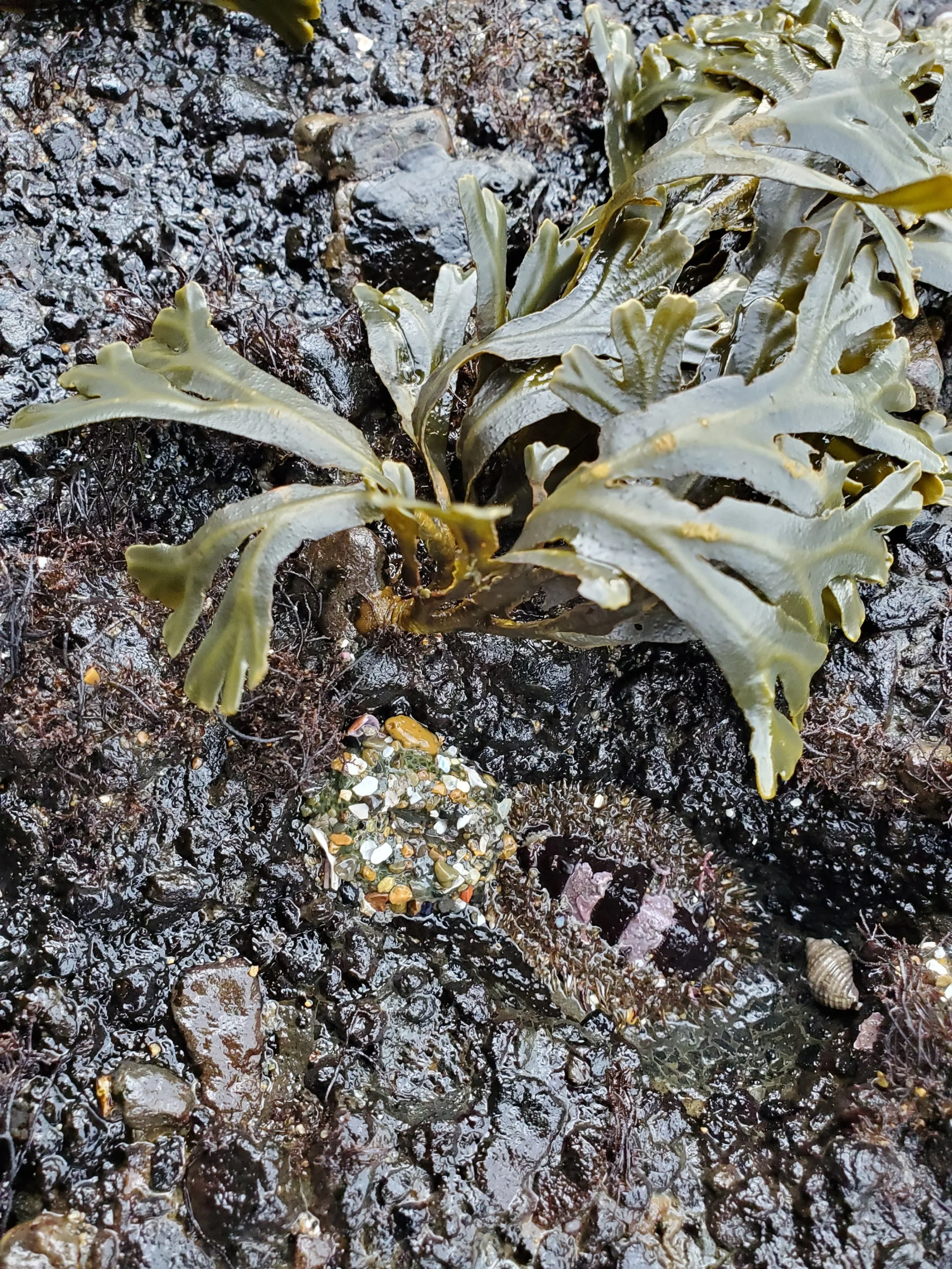Pacific Rockweed (Fucus distichus)
Pacific rockweed clump washed up in the sand (photo credit: Lauren Rice)
Pacific rockweed growing on a rock (photo credit: Katie Corliss)
Description: Pacific rockweed grows in a forked branching pattern and is a darker brown color with olive green to yellow-brown tips. The tips of its branches swell as they mature into air bladders and gain a bumpy texture. These bumps are the reproductive receptacles holding the gametes. Like other seaweed species, Pacific rockweed fastens to substrates with its holdfast. On average, it grows to be about 40 cm long.
Habitat: This common species of seaweed has quite the geographic range; it’s found in the Arctic Ocean, the Bering Sea, and the Pacific Ocean from the Aleutian Islands to central California, and along the coastlines of Japan and Russia.
Tide Pool Tidbits:
Pacific rockweed contributes to tide pool ecosystems by providing shelter for marine invertebrates and other algae species; dense canopies of rockweed protect these organisms from being battered by waves or from drying out.
Common grazers of rockweed include mollusks like periwinkle snails and limpets.
Pacific rockweed also goes by many other names including bladderwrack, bubble kelp, popweed, and popping wrack.
Reference: The New Beachcomber’s Guide to the Pacific Northwest by J Duane Sept



